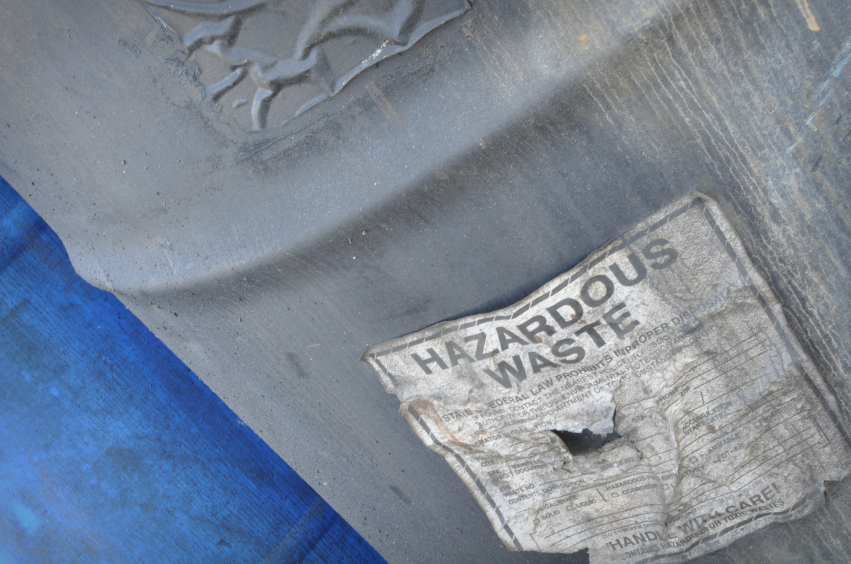 |
Note. These BMPs reflect certain federal standards for hazardous waste container management. They do not address all the requirements for containers. Also, your state may have stricter hazardous waste container management requirements that are not reflected in theses BMPs.
Forget expensive calls to lawyers and consultants. With Enviro.BLR.com, you get instant access, 24/7. Try it out today and get the 2015 EHS Salary Guide, absolutely free. Download Now.
Additional BMPs for Hazardous Waste Containers
- Keep containers in good condition. One of the easiest ways to prevent spills is to make sure that containers are kept in good condition—both before the waste is put in the container and while you are managing the container.
- Make sure containers are free of dents and corrosion—these weaken the container.
- Containers must not leak—the container must be structurally sound.
- Containers must not bulge.
- If the container is filled, keep it in good condition. Your facility should have written procedures for managing filled containers. At minimum, you must:
- Keep containers closed at all times, except when you are adding or removing waste from the container.
- Be careful when you are handling the containers. You must correctly open, handle, and store containers to prevent ruptures or leaks. For example, use drum grapplers to lift and move drums—don’t hand-roll the drums from one area to another.
- If the container begins to leak, or you notice dents or bulges, transfer the waste to another container.
- Incompatible wastes must be physically separated.
- Store ignitable and/or reactive wastes at least 50 feet from your property line.
- Manage ignitable and/or reactive wastes to prevent fire and/or explosions.
Everything You Need for Environmental Compliance
Enviro.BLR.com puts everything you need at your fingertips, including practical RCRA, CAA, CWA, hazardous waste regulatory analysis and activity, news, and compliance tools. Try it at no cost or risk and get a FREE report.
- If applicable, be sure to follow satellite accumulation area (SAA) requirements. Large quantity generators (LQGs) and small quantity generators (SQGs) can store up to 55 gallons (gal) of hazardous waste (or up to 1 quart of acutely hazardous waste) at an SAA for an unlimited amount of time and following only some of the hazardous waste storage requirements. Because of fewer requirements, facilities like to designate storage areas as SAAs. However, the definition of an SAA is specific. SAAs can only be located at or near the point of waste generation and the SAA has to be under the control of the person generating the waste. To store waste at an SAA you must:
- Keep the waste containers in good condition.
- Make sure the waste is compatible with the container.
- Keep containers closed when not adding or removing waste. Make sure you correctly handle the containers to prevent leaks or spills.
- Mark container with words “Hazardous Waste” or words that identify the contents (e.g., “spent toluene solvent” or “green tank waste”).
- If you accumulate in excess of 55 gal of hazardous waste or one quart of acutely hazardous waste at an SAA within 3 days, you must mark the container holding the excess accumulation with the date the excess amount began accumulating and move the container holding the excess accumulation to a container storage area.
- Summing up—some general BMPs for managing containers safely. Some of these tips were previously mentioned but bear repeating.
- Use a funnel or hose to add or transfer wastes to drums. This will prevent spills. Remember to rinse the funnel and characterize the rinse water (a dedicated funnel would not have to be rinsed).
- If you notice a container that is leaking or is in poor condition, transfer the waste to a new container immediately.
- Keep containers cool and dry.
- Make sure all container storage areas are clearly marked—keep ignitable/reactive wastes in their own area.
- Don’t stack ignitable/reactive wastes.
- Make sure to open and close steel drums with a spark-proof bung wrench.
- Don’t push, roll, or drag containers. Use the right equipment to move the drums.
- Make sure the drums are easy to reach—keep an open aisle space so people and equipment can move freely.
- Don’t drive equipment (e.g., trucks, forklifts) into container storage areas unless you are moving containers.
- Keep the containers in a “containment area” to hold spills. Dikes, berms, or walls can provide containment.
